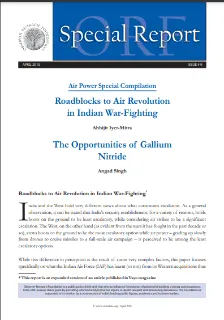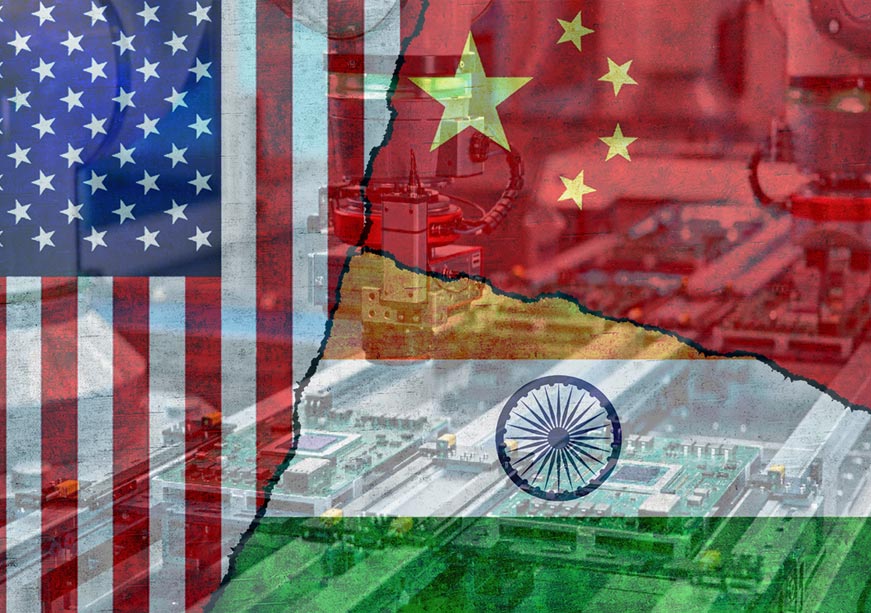• Roadblocks to Air Revolution in Indian War-Fighting
• The Opportunities of Gallium Nitride
Doctrinal and war-fighting changes elude the IAF as it grapples to adopt technological upgrades in its fourth generation fighter force.
India and the West hold very different views about what constitutes escalation. As a general observation, it can be stated that India’s security establishment, for a variety of reasons, holds Iboots on the ground to be least escalatory, while considering air strikes to be a significant escalation. The West, on the other hand (as evident from the wars it has fought in the past decade or so), views boots on the ground to be the most escalatory option while air power – grading up slowly from drones to cruise missiles to a full-scale air campaign – is perceived to be among the least escalatory options.
While this difference in perception is the result of some very complex factors, this paper focuses specifically on what the Indian Air Force (IAF) has learnt (or not) from its Western acquisitions thus far. The picture is quite sobering in that it would seem the IAF is, to date, without a 4.5+-gen aircraft. Consequently, many of the doctrinal and war-fighting changes brought about as a result of the technological progression within the fourth generation are yet to be adopted by the IAF.
This is not to suggest that the IAF does not understand what these 4.5+-gen gains are, but, rather, that large decision-making pockets within the IAF and the scientific bureaucracy have drawn different lessons from various episodes, and that, while they understand the end-product – that is ‘western qualitative superiority’ in the air – quite well, the component lessons have not been integrated into an actionable and organic whole. What this translates into, in practical terms, is that hardware purchases are not resulting in operational gains – the classic case being the Sukhoi Su-30 MKI, which, as this paper shows, has turned into a white elephant due to lack of standardisation of knowledge, or, in some cases, wrong knowledge.
The IAF’s perception of technology has, very likely, been shaped by three factors. The first is that the IAF has not fought a full-scale war since 1971. The second is that in these 43 years the IAF has transitioned from a first and second-generation fighter force in combat to one with third and fourth generation fighters, without engaging in an all-out war. As a result, third and fourth-generation tactics have either never been applied in combat or have been tested in highly limited engagements, like Kargil.
The third – and perhaps the most important – factor is the electronics revolution that happened ‘under the skin’ within the fourth generation. While this revolution did not improve range or kinematics, it freed fighters almost completely from ground control and overcame many of the technology blocks to fully operational Beyond Visual Range combat. It also heralded quantum leaps in sensor and jamming technology which synergised into a whole and gave 4.5+ – gen pilots the ability to focus entirely on fighting and the tactical situation at hand, rather than on the aircraft. The easiest way to understand this transformation is to look at the corollary upgrades in consumer electronics.

 PDF Download
PDF Download



 PREV
PREV

